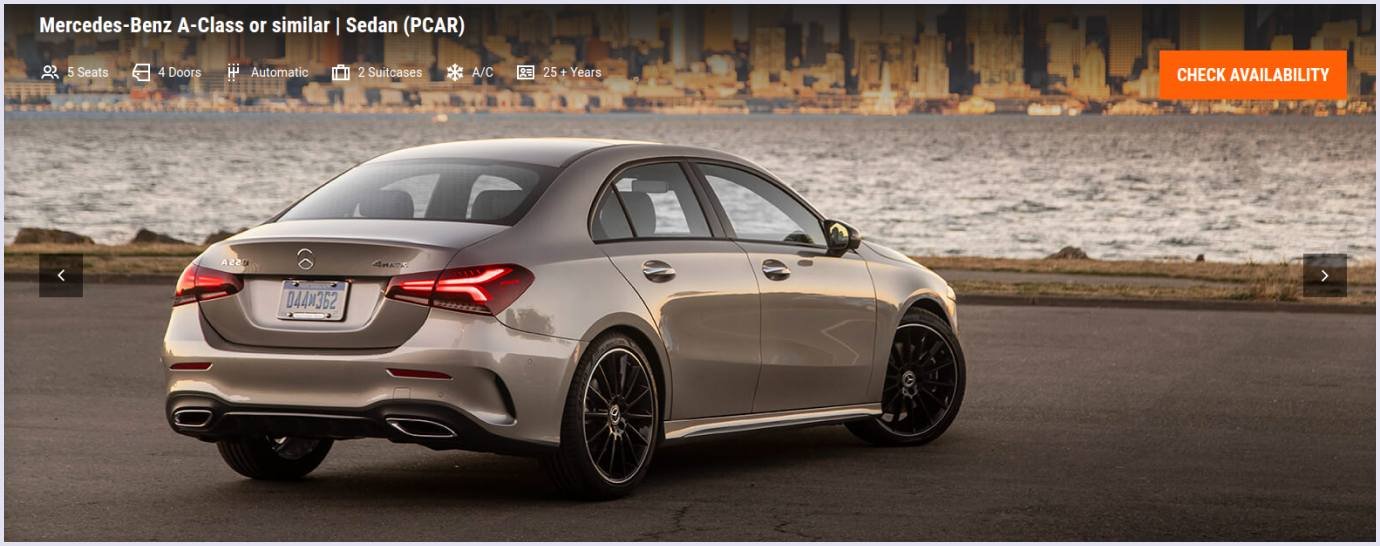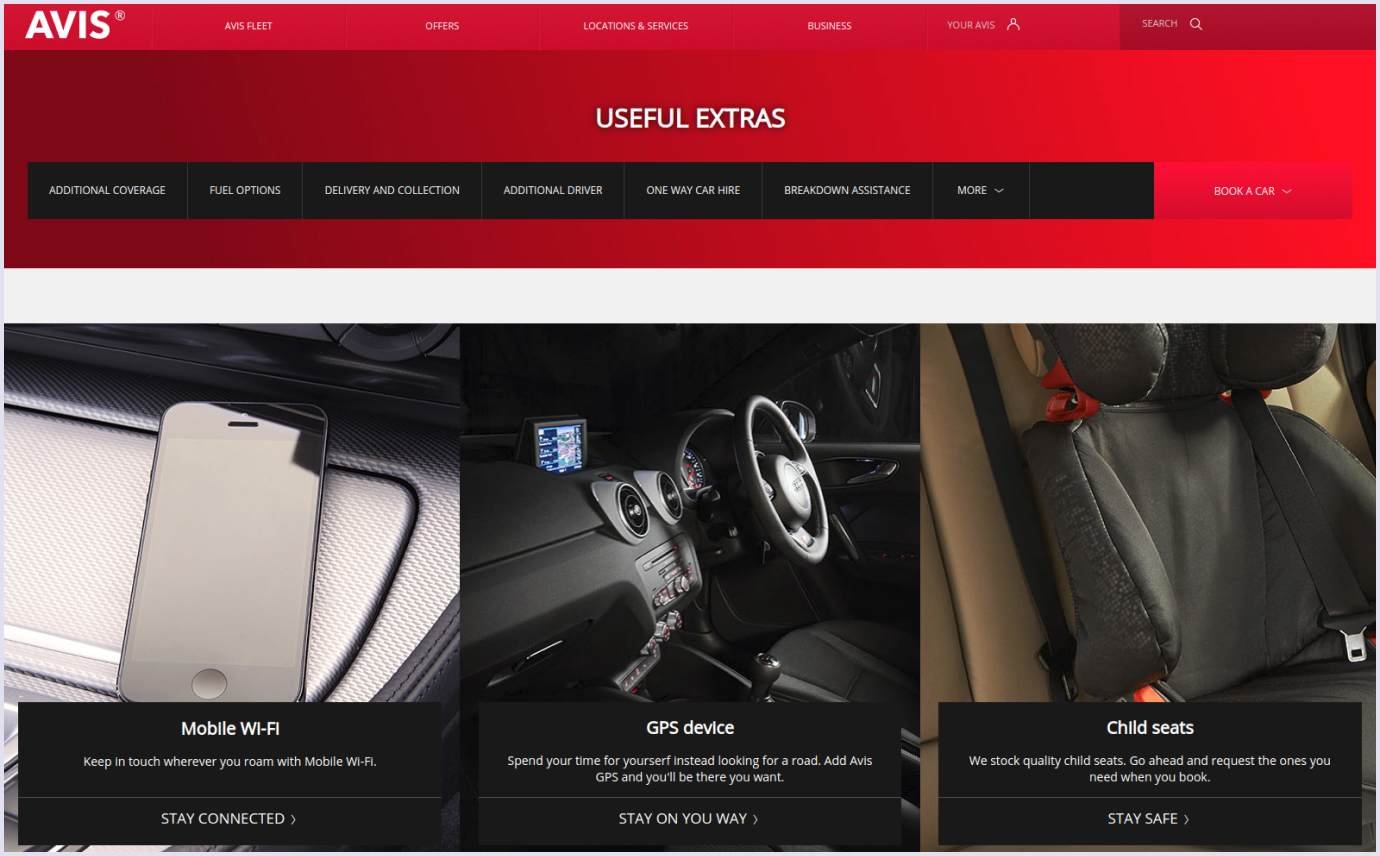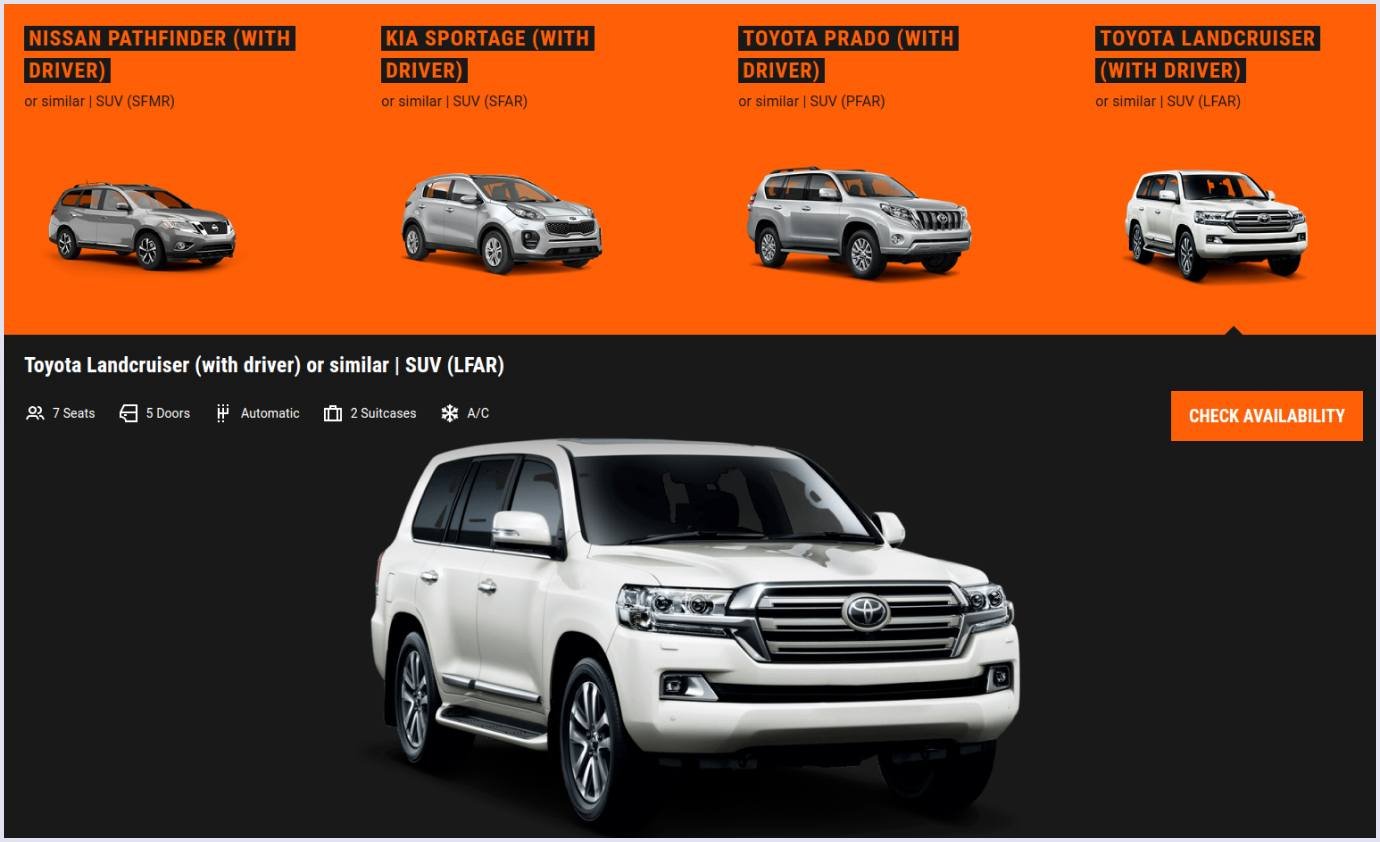These days, most of us turn to the Internet for just about everything, including booking services online. That’s why online car rental systems have become so popular. Whether people need a car for a business trip or a vacation, they love the freedom and flexibility that comes with renting a vehicle.
It’s no surprise that car rental websites have become a must-have in the travel industry. They offer convenience, independence, and a stress-free way for travelers to get around.
In this article, Codica’s experts will walk you through the essentials of building a car rental website. With the tips we’ll share, you’ll be on your way to creating a site that not only attracts customers but also sets your car rental business up for success. Let’s get started.
Overview of the car rental market
What is a car rental website?
A car rental website is exactly what it sounds like - an online platform where you can rent a car for a set period at a specific price. Whether you need a car for a few hours or a few months, these websites make it easy to find the perfect ride for your needs.

Source: Rentalcars.com
But it’s not just about cars. Many rental services sweeten the deal with extras like insurance options, damage protection, free Wi-Fi, child safety seats, and even entertainment gadgets to make your trip more enjoyable.
Here’s when a car rental website really comes in handy:
- For hassle-free travel. You want the comfort and freedom of having your own car while on a trip.
- For a test drive. You’re thinking about buying a car but want to take it for a spin first.
- For short-term needs. You need a car for a while, but don’t want the commitment of owning one.
Car rental websites are all about making life easier, whether you’re traveling, testing a vehicle, or just need a temporary set of wheels.
The current state of the car rental market
The car rental industry is experiencing a strong and steady rebound, driven by renewed travel demand, digital adoption, and the expansion of flexible mobility options.
According to Mordor Intelligence, the global car rental market is valued at USD 153.47 billion in 2025 and is projected to reach USD 252.94 billion by 2030, growing at a 10.51% CAGR.
Several factors support this growth. Rising leisure travel and airport traffic boost short-term bookings, while more travelers rely on online booking systems that streamline the reservation process. At the same time, the industry continues to shift toward electrification. Despite challenges with EV residual values, corporate sustainability goals encourage steady investment in hybrid and electric fleets.
Regional performance varies:
- North America remains the largest market, benefiting from mature travel infrastructure and strong corporate demand.
- Asia-Pacific is the fastest-growing region, driven by expanding middle-class travel, improving airport networks, and the rapid adoption of online mobility services.
Overall, the market is evolving into a more digital, flexible, and customer-centric ecosystem, shaped by data-driven pricing, contactless rentals, and the rising popularity of subscription and long-term rental models.
Top 3 latest industry trends
1. Adaptive pricing ecosystems
Car rental platforms are turning into dynamic pricing engines that work in real time. Systems sync with external signals - flight delays, demand surges, local events, weather patterns, and even congestion levels.
As a result, pricing becomes adaptive: costs shift minute-to-minute, ensuring better fleet utilization and more transparent options for travelers.
For users, this means more flexible deals. For operators, higher occupancy and fewer idle days.
2. Cross-platform mobility integration
Car rentals are becoming part of broader multimodal travel ecosystems:
- airline apps offering rental check-in during flight,
- hotel platforms selling rental bundles,
- mobility apps connecting ride-hailing + rentals + public transit.
This trend transforms rentals into a single tap inside a traveler’s existing journey. The smoother the integration, the higher the conversion.
3. Behavioral-personalized rental experiences
Beyond basic AI recommendations, rental platforms now use advanced behavioral signals:
- trip purpose prediction (leisure, business, relocation),
- group vs solo travel detection,
- highly specific preference matching (luggage capacity, driving style, charging comfort, accessibility needs).
Car selection becomes almost instinctive: the platform suggests the exact option before the user even thinks to search for it. This personalization reduces decision fatigue and makes rentals feel tailored, not transactional.
Key players
The car rental market is shaped by brands that consistently deliver strong service, reliable digital tools, and customer experiences that meet rising expectations.
According to the 2025 J.D. Power North America Rental Car Satisfaction Study, these companies hold leading positions based on real traveler feedback collected across airport locations.
Enterprise
Enterprise holds the highest satisfaction score at 734 points, standing out for its balanced approach: helpful staff, smooth rental processes, clear pricing, and effective digital tools. Its consistency across touchpoints keeps it at the top of the rankings.
National
National follows with 721 points. The brand is recognized for efficiency, streamlined workflows, and loyalty-friendly service. Slight shifts in perceived value and convenience affect its score, but its reputation among frequent travelers remains strong.
Advantage Rent A Car
Advantage reaches 711 points, reflecting one of the greatest improvements in user satisfaction. Enhanced ease of rental, stronger digital support, and better value perceptions contribute to its climb in the rankings.
Sixt
Sixt also earns 711 points, maintaining a strong position with its tech-focused platform, modern fleet, and distinctive customer experience. Its digital tools and premium vehicle selection remain core strengths.
Hertz
Hertz holds 702 points, supported by a wide fleet, global coverage, and improving rental workflows. Its digital services continue to advance, helping elevate the overall experience.
Other notable brands include Ace Rent A Car, known for competitive pricing and simple service, and Alamo, which maintains steady performance at major travel hubs.
Avis, Budget, and Thrifty remain below the industry average but continue to improve in trust and perceived value, while Payless and Dollar score lower overall yet show progress in rental clarity and customer support.
Across the board, brands that communicate clearly, offer intuitive digital tools, keep pricing transparent, and streamline pick-up processes tend to earn higher traveler satisfaction.

Developing a car rental website: Best practices
Launching a car rental website isn't just about renting cars. It's about creating an experience for customers, earning their trust, and adding value to attract and retain them. This guide breaks down the key milestones for developing such a platform with the aim of distinction and profitability.
Upload high-quality vehicle photos to gain more customers
When working on a car rental reservation system, pay extra attention to the vehicle gallery. Remember that the more attractive a car looks, the easier it will be to rent it out. However, make sure that all images are realistic. Otherwise, customers might be disappointed to face a huge difference between a real-life car and a vehicle your online booking system displays.
For example, on the car rental website SIXT, you can see a diverse photo gallery of available cars.

Source: SIXT
Establish credibility
There are several ways you can make a rental car website reliable and trustworthy. First, if there is an interesting story behind your car reservation system, you can share it with customers. It would be a great idea to highlight the key milestones that mark your marketplace’s development and growth.
Also, testimonials from satisfied customers serve as a proven way to show that your online booking system can be trusted.
Finally, you can provide your car rental website users with the exact figures, be it the number of bookings, users, or reviews. This way, you may impress your potential customers with the fantastic results you managed to achieve with your car rental system.
Specify the services you offer
Make sure that your potential customers understand what kinds of services are available on your car rental website. If you have several offerings, differentiate primary services from secondary ones. Inform customers with a brief description of each proposition.

Source: AVIS
Give clear instructions
Describe how the car rental reservation system works on your website. Create a step-by-step guide in the form of a scheme. By using specific icons or pictures, you will make your tutorial catch and easily digestible.
Also, it'd be a good idea to add an FAQ section to your online booking system website. It is a proven way to respond to the needs of your potential customers accordingly.
A car rental website, AutoRentals, guides, educates, and informs its users with the help of an effective FAQ section:

Source: AutoRentals
Research the market to create new opportunities
The majority of car booking websites provide the same range of services. Given that, you will have to work hard to attract potential customers to your online rental system. Conduct market research and come up with additional services travelers can benefit from.
Discover how we have delivered the first online auto marketplace in Africa.
The most popular revenue models
Here are some of the most effective revenue models you can implement to monetize your car rental website and maximize profitability:
- Commission. Travelers pay a certain commission from a rental fee set by the car owner.
- Advertising. Allow other businesses to promote their products or services on your car rental website for a certain fee.
- Additional services. Offer travelers extra services such as vehicle cleaning, car insurance, or on-road assistance. This way, you will be able to enhance their user experience greatly and increase your profit.
- Subscription. You can offer loyal customers different packages and charge them monthly.
- Paid listings. Car owners are charged for showing their vehicles on featured listings.

Must-have functionality for a car rental website
1. Convenient car booking system
This is the first feature you should take care of. Keep the booking form short and simple. Let customers specify only basic information such as the destination of the ride, its duration, time, and date. Make sure that users can cancel their reservation promptly if necessary.
When you create a car rental website, do not forget to implement an advanced search system. With its help, customers will be able to find and rent a car based on their specific needs and wants.
Finally, it would be great to allow users to sign in to your car rental website via socials to streamline the check-in process.
2. Flexible packages and plans
Create separate plans for one-way trips, as well as local and long-distance journeys. This way, tourists will be able to choose the most suitable and convenient option.
Also, you can customize fare plans for the holiday season as a part of a loyalty program. For example, long-distance travelers can benefit from different discounts and coupons. In addition, you can lower fares for premium users around holidays as well.
3. Mobile-first approach
The chances are that a number of website visitors will be using your car rental reservation services via mobile devices. For this reason, your task is to optimize your car rental website for different screen sizes and resolutions.
Alternatively, consider creating a progressive web app. With progressive web app development services, you will provide mobile users with a superb native app experience.
4. Reviews and ratings
Genuine customer feedback allows you to increase the conversion rate. It is a well-known fact that consumers conduct a lot of research before making a purchase or ordering a service.
Given that, honest reviews from users of your car rental system will help them choose your website over similar solutions.
Besides, this way, you will prove the credibility of your platform to potential customers.
5. Fleet management
With this feature, you will always know the current location of a specific car. Consequently, the biggest issue in the car rental domain, specifically car theft, can be prevented.
Apart from that, your car rental reservation system should show users the currency status of the car they would like to rent. They should see whether it is available, rented, or under repair.
Finally, it will be easier to monitor the condition of each vehicle since you will have records of damage and repairs at hand. Extra data about your fleet includes the total number of cars, their models, and insurance expiration dates.
Below, you can see the car fleet available on the car rental website Sixt:

Source: SIXT
Apart from that, consider implementing the following features:
- Multiple payment gateways;
- Documents scanner;
- Convenient reporting system;
- Content management system;
- Booking management;
- Communication channels;
- Localization.
Defining the development approach
There are two options for developing a car booking system. You can either use a ready-made solution, or you can build your own car rental website from scratch.
Let’s discuss the pros and cons of each approach so you can choose the best option for your business.
Off-the-shelf products
There are plenty of website builders and car reservation software on the web that will allow you to launch a website for car rentals in mere days. Though the coding background is not required, you still need to know how plugins and servers work to use ready-made solutions properly. For this reason, you will need to hire a developer who will set up your system.
It is worth noting that out-of-the-box solutions will cover only very basic business needs. If you want to add some unique functionality, they may not be enough.
Custom car reservation software development
If you choose this approach, you will get a unique product tailored to your specific business requirements. You will benefit from unlimited flexibility and increased security.
Besides, you should not worry about future upgrades and adding new features. With custom software development services, you can easily extend the existing functionality. This way, you have a great chance to overbeat your competitors by offering features that similar solutions lack.
Finally, custom booking system development allows you to integrate any third-party solution you need. Find out how we delivered a fast-loading accommodation rental website for expats.
Step-by-step guide to building a car rental website
Setting up a car rental website may, at first, seem complicated, but with a clear plan and the right steps, it becomes an achievable and fulfilling process. This guide will walk you through each step-from defining your vision all the way to scaling your platform for long-term success.
Step 1: Define your vision and understand the market
Every successful project starts with a clearly defined purpose. This is where product discovery services become essential, helping you validate assumptions, clarify business goals, and align your future platform with real market needs.
- Define the target audience. These could be tourists, businesspeople, or local commuters. Their requirements would differ: from short-time rentals to flexi pickup options.
- MVP feature list. Include intuitive booking, real-time fleet management, secure payment integration, and user profiles for easy access.
- Competitor research. Go through successful car-sharing/rental platforms. Find out what works and doesn't on such platforms; then create a niche in the car categories-for instance, eco-cars, loyalty schemes, or even concierge services.
Understanding your audience and market dynamics ensures you build a platform that will meet real needs and give them a reason to choose you over the competition.
Read also: What is Project Discovery Phase in Custom Software Development
Step 2: Plan and design your platform
Design is where your vision takes shape. A user-friendly, visually appealing platform is critical to attracting and retaining users.
- Define the customer's journey. Determine how a user will interact with your site-from searching for a car to making a booking. Every stage should be frictionless and intuitive.
- Embrace the mobile-first mindset. As the majority of users interact with platforms using their phones, it is vital to ensure your website is optimised for small screen devices. In other words, responsive design isn't optional-it's imperative.
- Keep it simple. Give them clean layouts, clearly visible buttons, and intuitive navigation to take users through with ease.
Well-thought-out design is about creating an experience that keeps users coming back. With the support of professional UI/UX design services, you can ensure every interaction feels intuitive, seamless, and enjoyable.
Recommended reading: Building a Future-Ready Marketplace with MACH Architecture
Step 3: Develop the core features
It's time to bring your platform into the real world. Work with the developers to transform your idea into an operating website.
- Backend development. Integrate fleet management, booking process, payment gateway, and authentication of users to run the background smoothly.
- Frontend development. Keep an eye on creating an appealing and interactive UI. Every click, every swipe, every scroll should feel like a breeze.
- Testing. Every feature is rigorously tested on devices and browsers for functionality, speed, and reliability with our quality assurance services before it goes live.
Core features are the backbone of your platform, and nailing them is a critical success factor for delivering a great user experience.
You may also like: How Automation Testing Increases Execution Speed, Test Coverage, and Effectiveness
Step 4: Launch and gather feedback
Getting your website live is a huge milestone, but it's not the end. It's the beginning of this stage, where everything is about learning and refining.
- Start small. Start building a strong ground for the development of the car rental platform by starting with MVP services so that it conveys maximum value while using a minimum quantity of resources to successfully test the idea.
- Engage users for feedback. Ask for input on what works and what doesn't. Surveys, reviews, and analytics will prove priceless in hints.
- Iterate and improve. Take the feedback in and utilize it to enhance your platform in accordance with what users actually want.
Launching is a chance to learn and adapt. And the more you listen to your users, the better your platform will get.
Step 5: Scale and optimize
When your platform is up and running smoothly, it's time to focus on growth and long-term success.
- Expand features. Add advanced options such as AI-powered recommendations, loyalty programs, and personalized user dashboards that increase engagement.
- Pay attention to performance. Improve the loading time, make sure it's scalable for high traffic, and optimize your back-end systems for growing demand.
- Monitor trends. Keep pace with user expectations through behavior and market trend analysis. Be prepared to change and innovate as required.
Scaling is a continuous process of adapting the platform to meet future demands.
Building a car rental website is like an adventure. You've got to be open to discovery, creativity, and innovation. If you take it step by step, define your vision, design thoughtfully, implement core features, and scale strategically, you'll end up with a platform that really stands out in a competitive market.

Why Codica is the perfect partner for your car rental platform
Having the right partner in web development can make or break a car rental website. Here at Codica, we don't just build platforms. We craft custom solutions to help businesses thrive.
We've been around for over 10 years, so we've really honed our skills in creating smooth, flexible, and top-notch platforms for the automotive industry. We're proud to say that our products are more than just functional: they're game-changers, making your car booking system stand out and drive success.
One project we're proud of is the multi-vendor vehicle marketplace, the first of its kind in Africa. Our team worked closely with the client to turn their ambitious idea into reality, creating a fast, intuitive, and scalable platform. The marketplace has advanced search filters, support for multiple currencies and languages, and a smooth user experience for buyers and sellers.
As the site grew, we scaled to 89 regional sites, keeping our focus on high performance and meeting the increasing demand. This project shows how we're always coming up with new ideas and adapting to make our clients successful.
How much does it cost to build a car rental website?
Actually, the final price varies from project to project. Here, we should consider the project complexity, namely the features you want to implement.
Another aspect that directly impacts the cost of building a website for car rentals is the development approach. Ready-made solutions will be less costly than custom reservation software development.
Still, we can try and provide you with a rough estimate. Check the table below to see how the must-have functionality defines the total cost of a car rental website. For this purpose, we used the average hourly rate of Eastern European development providers, which is $50/hour.
| Features | Time, hours | Cost ($50/h) |
| Design | ||
| UX development | 56 | $2,800 |
| UI development | 64 | $3,200 |
| Architecture | ||
| Project setup | 8 | $400 |
| Project setup | 16 | $800 |
| Integrations | ||
| Payment (Stripe or PayPal) | 40 | $2,000 |
| Main functionality | ||
| Authorization and security | 16 | $800 |
| User profiles | 24 | $1,200 |
| Homepage | 24 | $1,200 |
| Search and filters | 96 | $4,800 |
| Cars management | 80 | $4,000 |
| Reviews and ratings | 64 | $3,200 |
| Notifications | 48 | $2,400 |
| Geolocation functionality | 48 | $2,400 |
| Booking management | 40 | $2,000 |
| Finance management | 40 | $2,000 |
| Documents scanner | 48 | $2,400 |
| User panel | 120 | $6,000 |
| Admin panel | 124 | $6,200 |
| Non-development activity | ||
| Project management | 64 | $3,200 |
| Quality assurance | 80 | $4,000 |
| Code review | 48 | $2,400 |
| Total | 1148 | $57,400 |
Please note that only your development partner will be able to provide you with a final quote.
Conclusion
Now, you have a better understanding of the considerations that need to be made if you decide to create a rental car website. We believe that the tips we have provided in this article will help you to outsmart your competitors and become one of the leaders in your industry.
We have over 10 years of experience in developing solutions for a wide variety of needs, and auto rental site development is no exception. Contact us today to tell us more about your needs, and let's create something amazing together.

